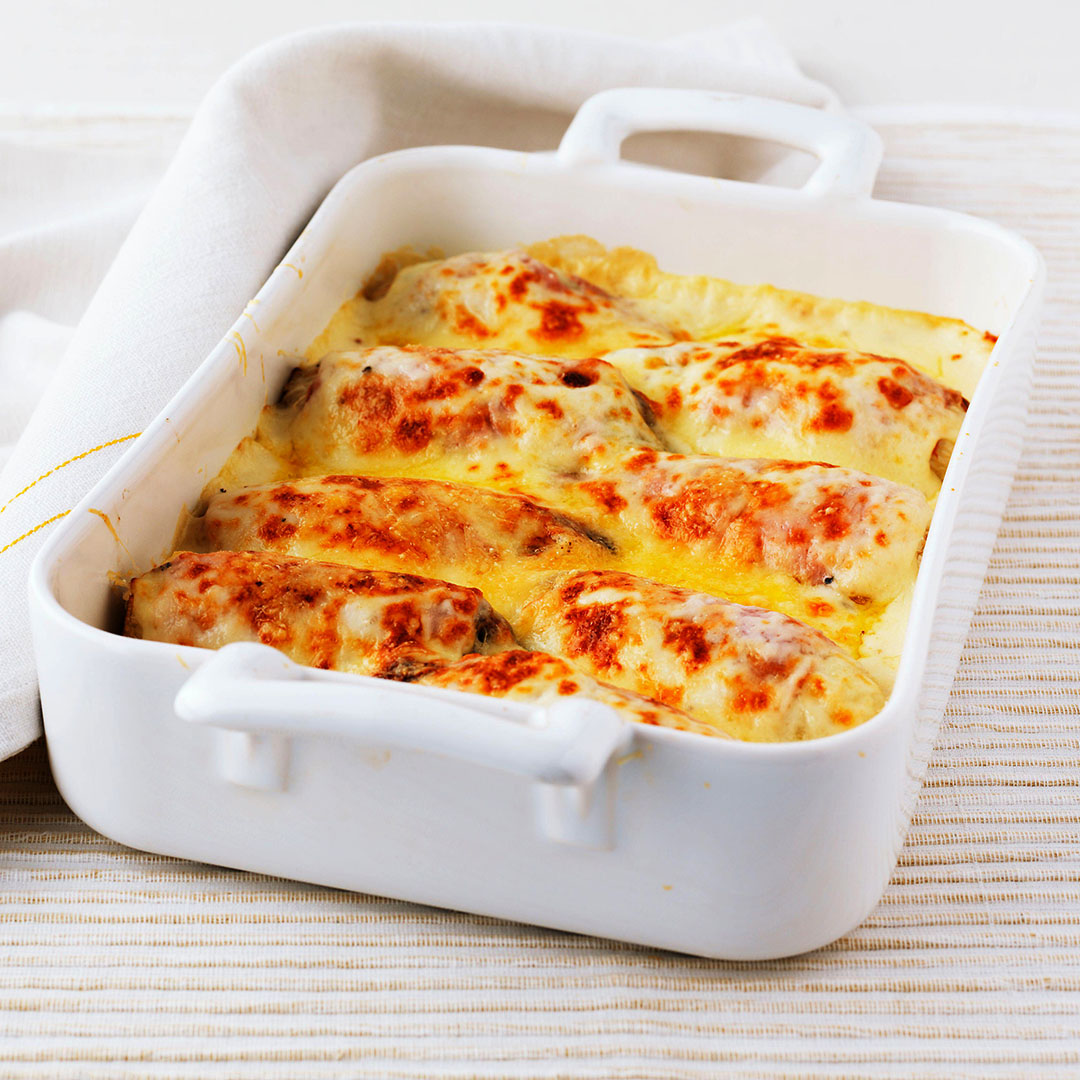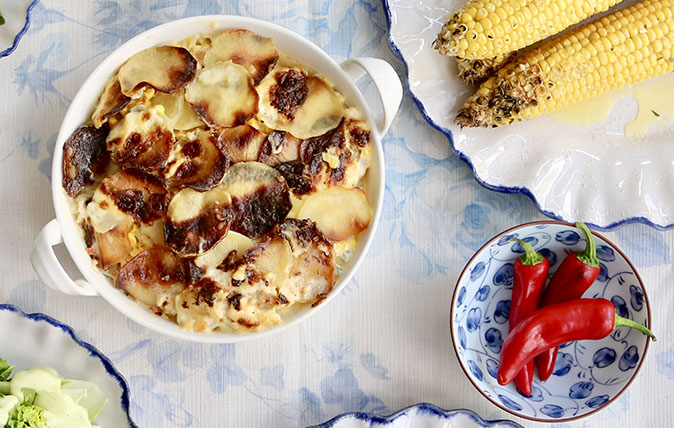Tom Parker Bowles: All hail the glory of the gratin
A no-nonsense feast to gird the belly and quicken the heart, the gratin — whether it be slathered over meat, fish or vegetables — is all about an indulgent excess of cream topped by crispy cheese, says Tom Parker Bowles.


There’s nothing subtle about the gratin, no elegant nuance or finely tuned technique. It has scant regard for parsimony, restraint or moderation and plays little heed to the dreary strictures of calorie control. Because this is a dish that is all about excess, of cream, cheese, crunch and delight. Simplicity, too — a no-nonsense feast to gird the belly and quicken the heart. It soothes and seduces, cossets and calms, the very quintessence of winter delight.
The key to any proper gratin is, of course, that crisp top. Originally, the term referred to the burnt, often delectable part of a cooked dish that was left behind in the pot and had to be scraped (gratéed) off. Similar to the socarrat at the base of a paella, all chewy, toasted caramelised joy. But, by the 19th century, its meaning had evolved from by-product to main event, as the term (both noun and verb) described any dish dwelling beneath a crust of cheese, breadcrumbs, or, well, nothing at all.
Take gratin Dauphinoise, perhaps the most famous gratin of all. Purists will argue (they always do) that the dish, from the French region of Dauphiné, has nothing more than garlic, double cream and potatoes.

The first ingredient is simply rubbed across the baking dish, a delicate flavouring rather than pungent punch. The potatoes should be waxy and sliced translucently thin, preferably on a mandolin. And nothing else added, save for a judicious grind of pepper and a good pinch of salt. As to the addition of gruyère cheese… sacré bleu! Travail du Diable!
Yet, Auguste Escoffier, the high priest of modern French haute cuisine, added eggs to his cream. And Larousse Gastronomique, that bible of all things culinaire, allows a little grated cheese. Mon dieu!
The debate rages on to this day. ‘No cheese!’ growled Michel Roux Jr, a few weeks back on Twitter, in response to the recipe that was posted by his friend Fred Sirieix: ‘Your recipe is a gratin Savoyard.’
Anyway, you’ll find gratins all over France; the Languedocien is dish of aubergine and tomato, topped with breadcrumbs and ‘innocent of cheese’; endives au jambon is a classic of Belgium and northern France; aubergines au gratin à la Catalane comes from the Roussillon. And it’s not only the French. The Swedes have Jansson’s temptation, made with potatoes and pickled sprats, the Brits their cauliflower cheese and pan haggerty (a splendidly named Northumbrian concoction of bacon, carrots and more potatoes under a thick blanket of melted cheese), the Italians their Neapolitan pasta al gratin and the American their mac ‘n’ cheese. Proof, if proof be needed, of its universal appeal. All hail the glory of the gratin.
Exquisite houses, the beauty of Nature, and how to get the most from your life, straight to your inbox.
Recipe: Chicory gratin
Serves 2
This recipe comes from Raymond Blanc, one of that select band of great French chefs (which also includes the late Roux brothers, Pierre Koffmann and Claude Bosi) whom we Brits claim as our own. You could change the Comté for Cheddar, but that would be, I think, to miss the point.
Ingredients
For the chicory
- 4 heads yellow chicory
- 1tbspn lemon juice
- 1tbspn sugar
- 2 large pinches sea salt
- 6 white peppercorns
For the chard
- 10g unsalted butter
- 2 small Swiss chard stalks with leaves, stalks chopped into 1cm pieces; leaves roughly chopped
For the cheese sauce
- 35g/1¼oz unsalted butter
- 35g/1¼oz plain flour
- 450ml/16fl oz whole milk
- 100g/3½oz Comté cheese, finely grated
- 1tbspn Dijon mustard
- Pinch of sea salt and freshly ground white pepper
To assemble the gratin
- 4 slices cooked ham 50g/1¾oz Comté cheese, finely grated
Method
For the chicory, put it in a medium saucepan and add the lemon juice, sugar, salt, peppercorns and enough water to barely cover. Place on a medium heat and cover with a circle of baking paper and a lid smaller than the diameter of the pan (this is to keep the chicory submerged). Bring to the boil, then simmer for 45–60 minutes. It is important to cook the chicory slowly to remove most of its bitterness.
Lift the chicory onto a wire rack to drain and cool. Once cool, gently press out any extra moisture with a tea towel.
Preheat the oven to 190˚C/170˚C fan/gas mark 5.
For the chard, put the butter and 100ml/3½fl oz water in a saucepan on a high heat. Cook the stalks for 20 minutes, adding more water if necessary. Once tender, lift them out and cook the leaves for three minutes in the same water. Strain, mix the stalks and leaves and arrange in a small gratin dish.
Meanwhile, make the cheese sauce. In a small saucepan on a medium heat, melt the butter. Add the flour, whisk until smooth and cook to a nutty blonde colour. Take the pan off the heat, whisk in the milk and return to the heat. Cook for at least four minutes, stirring constantly with the whisk until the sauce thickens.
Add the cheese and mustard and cook for three minutes, stirring, until the cheese has fully melted. Remove from the heat, taste and season if required.
To assemble the gratin, fold the ham slices in half and arrange one chicory head on each slice. Pack tightly in the dish atop the chard. Spoon over the cheese sauce and sprinkle with the remaining cheese. Bake in the top of the oven for 25 minutes, until golden brown.
Tom Parker Bowles is food writer, critic and regular contributor to Country Life.
